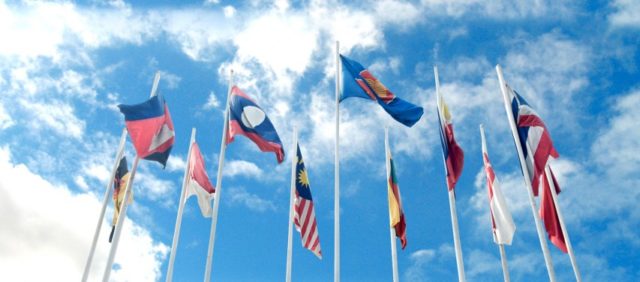The Association of Southeast Asian Nations (ASEAN) has launched three priority deliverables under the Master Plan on ASEAN Connectivity (MPAC) 2025 and unveiled the new ASEAN Connectivity microsite.
The priority deliverables and microsite were launched by the ASEAN Coordinating Council (ACC) at the 22nd ACC Meeting this month.
Secretary-General of ASEAN Dato Lim Jock Hoi emphasized that “the launch is a critical step in a multi-year journey towards a connected ASEAN.”
The MPAC 2025 aims to achieve a seamlessly and comprehensively connected and integrated ASEAN to promote competitiveness, inclusiveness, and a greater sense of ASEAN Community, said the regional group in a release.
Although MPAC 2025 is in the early stages of implementation, it has made substantive progress across its five strategic areas, namely, sustainable infrastructure, digital innovation, seamless logistics, regulatory excellence, and people mobility, it added.
The three priority deliverables were selected to address important challenges facing ASEAN, namely, infrastructure development, urbanization, and promotion of micro, small and medium enterprises (MSMEs), which account for between 95% and 99% of businesses in ASEAN.
One of these priority deliverables is to establish a rolling priority pipeline of ASEAN infrastructure projects to attract more public and private investments into infrastructure in ASEAN.
Due to budget constraints and competing demands for resources, there is not always sufficient investment in physical infrastructure in ASEAN. As a result, the quality of and access to infrastructure services across and between countries is varied. Therefore, the MPAC 2025 recommended undertaking a project to create a rolling priority pipeline list of potential ASEAN infrastructure projects and sources of funds.
Together with the World Bank, ASEAN expects to develop an initial list of priority ASEAN infrastructure projects by the first quarter of 2019.
Another priority deliverable is to develop the ASEAN Sustainable Urbanization Strategy (ASUS), with city specific-action plans and toolkits for cities to use as a template to mitigate urban challenges.
ASUS consists of seven priority sub-areas and eight priority actions identified based on the analysis of key trends impacting urbanization in ASEAN and stocktake of existing actions related to sustainable urbanization.
As part of ASUS, two accompanying toolkits are also available to assist local governments in ASEAN to advance sustainable urbanization in their cities.
The third is the study on the adoption of digital technology by MSMEs to ascertain how to encourage them to use digital technology as an enabler to increase their capacities and amplify their reach as the world moves into the fourth industrial revolution.
This study seeks to gain a fundamental understanding of the status of the adoption of digital technology by MSMEs, the common digital tools used, and how deeply embedded digitalization is in their business operations. Subsequently, the study suggests possible policy programs to effectively support MSMEs to overcome challenges in their digitalization process.
Aside from the three priority connectivity deliverables, the ACC also launched the ASEAN Connectivity microsite aimed at raising awareness of ASEAN connectivity, explaining the impacts of connectivity, and updating stakeholders on the implementation of MPAC 2025 initiatives and projects.
Photo courtesy of ASEAN









